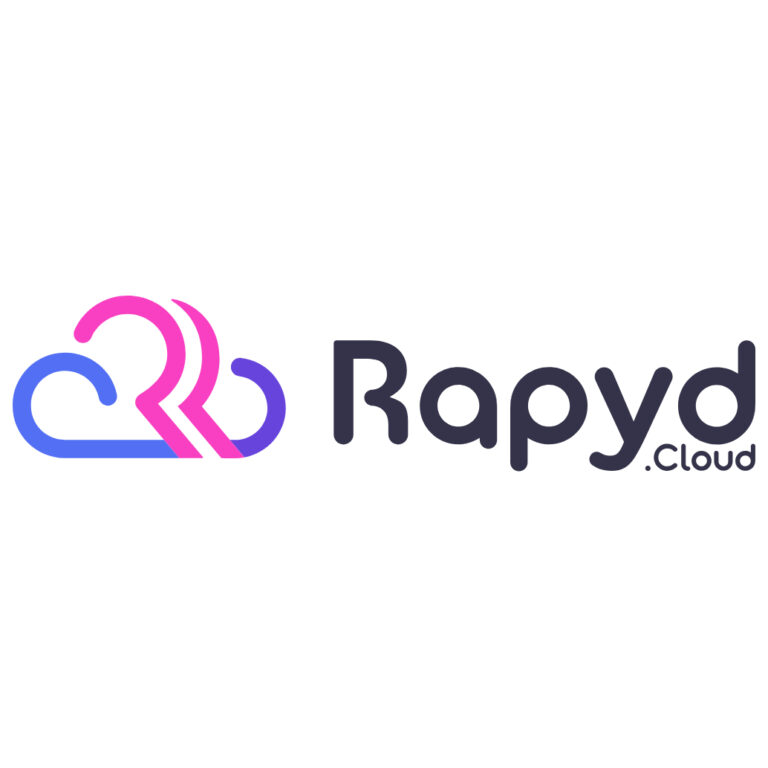WPLift is supported by its audience. When you purchase through links on our site, we may earn an affiliate commission.
9 Best Google Analytics Alternatives (Free & Paid) in 2025: Is It Time To Switch?
Are you looking for a Google Analytics alternative for your WordPress site? Perhaps you have privacy concerns about having Google handle your data? Do you need something more user-friendly? Or maybe you want different features and options than those provided by Google Analytics?
Either way, stay around as I will give you plenty of options – free and premium – for getting insights into how your website is performing.
Why Do You Need Analytics?
A website owner’s most valuable asset is analytical data. Such data provides detailed insights on visitor behavior, such as browsing habits, likes and dislikes, etc.
You can use such data to refine the website content to serve visitors’ needs better, thereby offering an enhanced visitor experience that will aid retention and attract new users. Further, you can also use it to hone your marketing campaigns by targeting individual user groups.
For example, you may be creating tons of great content, but you’re probably wasting your time without any analytical data on how many people are reading it. However, having that data means you will know which content is popular and which isn’t, allowing you to focus your efforts on the stuff that engages your audience.
Are the Days of Google Analytics Numbered?
No, Google Analytics is far from obsolete.
Google has been around for a long time and has become the most dominant player in search engines and many other related spheres, analytics included.
It remains one of the most trusted analytical data sources, something that is unlikely to change by teatime. However, as I will explain in this article, people are starting to realize that there are other options, and whether those have enough of an impact to worry Google remains to be seen.
The Downsides of Using Google Analytics
1. It’s Complicated
As I already mentioned, Google has been in the picture for many years, during which time it has seen massive growth.
Part of that growth saw the evolution of Google Analytics, a helpful tool for tracking website metrics. However, the platform continues to spawn, and as a result, Google Analytics is now highly complex and very intimidating for newcomers. Furthermore, features are constantly being added, removed, and altered, keeping even experienced users on their toes.
To cut a long story short, Google Analytics has become too complex for many people. As a result, it has a steep learning curve, and you then need to stay abreast of the continued changes to the platform, all of which take time.
2. Privacy Concerns
While it appears at face value that Google does everything for free, it didn’t become successful by being charitable.
Just as analytical data is a website owner’s greatest asset, Google’s biggest asset is the data it gathers, which it uses to create personalized (paid) advertisements. These are proven to convert better than randomly targeted ones, and as a result, the bulk of Google’s revenues comes from advertising, particularly search advertising.
Of course, there is absolutely nothing wrong with that – every company is in business to make money. But nowadays, people are increasingly concerned about privacy, and they are becoming more aware that companies like Google collect data without them realizing it.
When you use Google Analytics, you entrust your site data to them. While you may be okay with that, you must remember that you have an obligation to your site users. That means you will have to have a privacy policy on your site explaining how you handle data and what third parties are involved. However, that can also apply to some Google Analytics alternatives that store data on their servers rather than yours.
3. Ethical Concerns
As with other large corporates, the sheer size of Google means it has a tremendous amount of clout in so many areas.
For example, it holds the lion’s share of the search market – over 90%, in fact. Resultingly, Google effectively has the power to influence users simply in how it presents search results. A prime example is how the top results on every results page are paid adverts – many people think those are Google recommendations rather than paid ads.
I’m not saying Google does anything underhand, at least not deliberately. But remember, they are a business, and businesses only operate to make a profit. In Google’s case, those profits come primarily from paid ads. It’s like social media platforms – look at how different Facebook was when it first launched compared to now.
Google Analytics Alternatives
There are plenty of Google Analytics alternatives available. I will now show you eight of the most popular. My list includes free and premium options, so there will hopefully be something for everyone.
1. Clicky

Kicking off this list is Clicky, a popular freemium alternative to Google Analytics.
Clicky is not as feature-rich as Google Analytics, but that is a benefit rather than a disadvantage, as few people use all the tools in Google Analytics anyway. However, where Clicky excels over Google Analytics is how easy it makes accessing important information. All vital information is available right in front of you in the user-friendly interface. What’s more, setting up Clicky is very simple.
Pros
- Excellent real-time reporting
- Superior bounce rate calculation
Cons
- The free plan is a little limited, and you will need to upgrade to a premium plan to access things like outbound link, campaign, and goal tracking, etc.
- Data is still handled by a third party, although it is GDPR compliant
- The free version is limited to one site and a maximum of 3k daily page views
Price
The base Clicky plan is free, but as mentioned above, it has limitations on page views, the number of sites, and features.
Several upgrades are available, starting with Pro, costing $9.99 per month or $79.99 per year. Pro increases the page view list to 30k per day, and you can track up to ten sites. It also adds considerably more features.
The next plan is Pro Plus ($14.99 per month or $119.99 per year) which adds heat maps and uptime monitoring.
The most expensive plan is Pro Platinum. This is the same as Pro Plus, except it covers up to thirty websites and 100k daily page views. Pro Platinum costs $19.99 per month or $159.99 per year.
Furthermore, all new Clicky accounts automatically receive a free 21-day premium trial.
2. Independent Analytics

Independent Analytics is a simple and beautiful Google Analytics alternative. It adds a complete analytics dashboard into your WordPress dashboard, doesn’t slow down your site, and is fully GDPR compliant. Not to mention, you don’t need to mess with any tracking codes or signup for a third-party account elsewhere to use it. Just install, activate, and your site is tracking.
Independent Analytics has deep integration with WordPress so it can do things other analytics tools can’t. For instance, it can show you your page types and even let you filter by them, so you can easily create a report that shows only visits to your blog posts. You can also find your site’s top search terms, 404 errors, and custom post type performance.
Another useful feature is the Referrers report, which shows you where your site’s traffic is coming from. This report is also filterable, so you can dig deeper into your referrals and compare the performance of Search VS Social, and more.
Overall, Independent Analytics is an extremely useful tool for understanding the performance of a WordPress website.
Pros
- Easy to setup
- A modern and user-friendly analytics dashboard
- Customizable dashboard
- GDPR compliant
- Detailed reports that include metrics and page metadata
- Lightning fast tracking code
- It’s free
Cons
- None found at the moment
Price
The Independent Analytics plugin is completely free.
3. Piwik Pro

Piwik Pro is an excellent Google Analytics alternative for several important reasons:
- Unlike Google Analytics, Piwik Pro does not use the data gathered about your clients for targeted advertising purposes. Instead, you retain sole ownership of all data.
- Its data collection complies with privacy and security laws, such as GDPR, HIPAA, and CCPA.
- Once you hit the monthly limit of 50k sessions, Google Analytics only takes data samples. Conversely, Piwik Pro continues to give you a complete data set of your site traffic.
The free plan has excellent features, including Analytics, Tag Manager, and Consent Manager modules, plus a 14-month data retention period. Furthermore, data is stored securely in an EU-based cloud.
The premium Enterprise plan offers more storage options, including locally on your server. Furthermore, it also adds a Customer Data Platform module, and the data retention period extends to 25-months.
Pros
- The free version has extensive features
- The Enterprise plan includes dedicated technical support, personalized training, and customizations
- User-friendly interface
Cons
- The free version is limited to 500k monthly user actions and ten websites (Enterprise covers one billion actions and unlimited sites)
- Self-hosted data is only possible with the Enterprise plan
- Piwik Pro Enterprise is custom pricing only
Price
The core version of Piwik Pro is free, but as mentioned above, you are limited to 500k monthly user actions and ten websites.
Prices for Piwick Pro Enterprise are available only by direct consultation with the developer.
4. Matomo

Matomo spawned from the original open-source Piwik, but the two diverged back in 2016 into the two companies we see today. While both companies offer Google Analytics alternatives, their product offerings do differ.
One of the biggest differences between Matomo and Piwik Pro is that Piwik’s free plan only allows you to store data in their cloud – to host it locally requires a premium upgrade. Conversely, the free Matomo plan, ‘On-Premise,’ is local hosting only – if you want them to host the data, you will need the premium ‘Cloud’ plan.
There are advantages and disadvantages to this. On the upside, if you store the data locally on your server, you retain ownership of it and can keep it for as long as you wish (the Cloud plan only keeps it for two years), plus you can accommodate unlimited websites (Cloud restricts you to thirty.) The downside of self-hosting is some technical ability is needed to set it up, so I don’t recommend it for beginners.
While the free On-Premise plan allows you to control where your data is stored, it lacks the premium Cloud plan’s extra features. These include activity logs, heatmaps, custom reports, A/B testing, etc. Luckily, you can purchase each of those features individually, although they are not cheap.
Pros
- The free On-Premise version is ideal if you are looking to host the data on your server and for an unlimited time
- The free On-Premise version covers unlimited sites
- The premium ‘Cloud’ plan includes plenty of extra features
- Cloud is available as a 21-day free trial
Cons
- Adding additional features to the free On-Premise version is expensive
Price
Matomo’s ‘On-Premise’ plan is free. However, if you wish to add any of the extra features included in the ‘Cloud’ plan, you will pay from $29 to $570 each per year.
The cost of the ‘Cloud’ plan depends on the amount of website traffic you have. For example, for up to 50k hits, you will pay $23 per month, while one million hits will be $189 per month. Additional charges apply if you exceed the selected traffic quota.
5. Jetpack

Jetpack is a popular plugin renowned for its security and backup features. However, it also adds basic metrics that are perfect for beginners.
You will need a WordPress.com account to use Jetpack, although you don’t have to host your site there. Basic stats are added to your site’s backend dashboard, while more detailed insights are available on WordPress.com via a single click.
If you don’t need all the bells and whistles of Google Analytics, Jetpack keeps things nice and simple by providing only key information on post traffic and where it originates from, which may be sufficient for your needs.
Pros
- Clear, easy to use interface
- Simple set-up
- Easy integration into the WordPress dashboard (WordPress.com is part of Jetpack)
- Great for beginners as it provides simple, uncluttered information of the most useful data
Cons
- Only offers a fraction of the analytics and optimization features of Google Analytics (and some of the other solutions listed here) which may frustrate more advanced users
- Data is stored on WordPress.com servers
Price
The core Jetpack plugin is free, and that includes the statistics features.
Premium upgrades are available, but those only enhance the backup and security features. Details of those are available here.
6. Slimstat Analytics

Slimstat Analytics is a standalone WordPress plugin that provides pretty detailed analytical data that is still simple enough for novices.
Despite being a free plugin, Slimstat Analytics has several premium features. For example, it includes a real-time access log that allows you to monitor server latency page events, bounce rate, etc. Additionally, you can use shortcodes to embed reports in widgets, posts, or pages, and everything is entirely GDPR compliant. Oh, and there is also a rather attractive world map pinpointing your visitors’ locations.
Pros
- Integrates into your WordPress dashboard
- Filters allow you to exclude specific user types from stats collection
- Super-simple to set up and use
- All data is stored on your server, meaning you have full ownership and control of it
Cons
- No conversions or goal tracking
- A couple of third-party tools must be installed to use the geolocation and browser/OS tracking
Price
Slimstat Analytics is an entirely free, open-source plugin.
7. Fathom

If you are looking for a lightweight Google Analytics alternative that puts privacy first, Fathom is worth considering.
Fathom does not use cookies and is compliant with legislation such as GDPR, CCPA, ePrivacy, etc. Furthermore, it tracks only the most important metrics, meaning you won’t get overloaded with unnecessary information. As a result, you will be able to focus on your customers’ behaviors and make better marketing decisions.
Fathom is super easy to set up, and generating reports is a breeze.
Pros
- Intuitive interface
- You retain ownership of the data
- Free trial (seven days)
- Pricing is based on the volume of page views
- All plans cover up to fifty sites
Cons
- While a free version is available (Fathom Lite), it is not recommended as it is scant on features, is not PECR compliant, and uses cookies.
Price
Fathom pricing is based on the maximum number of page views. So, for example, up to 100k views costs $14 per month, 200k is $24, and 500k is $44, etc.
8. Plausible

Another simple, lightweight Google Analytics alternative is Plausible. Like Fathom, Plausible uses no cookies and complies with PECR, CCPA, and GDPR.
Plausible is far less intimidating to use than Google Analytics. With it, you will soon be tracking your website data and generating useful rather than baffling reports. It integrates with Google Search Console so you can see the search queries people are using to find your site. Furthermore, it also allows you to keep track of events, campaigns, and goal conversions.
Pros
- You retain ownership of the data
- Simple, single-page metrics
- Easy to set up and use
- Up to fifty websites are covered
- Unlimited 30-day free trial available
Cons
- No free plan is available (although there is a free trial)
Price
Plausible pricing is on a sliding scale of page views. For example, 10k page views cost $9 per month or $90 per year, 500k views are $49 per month or $490 per year, etc.
9. Woopra

While Woopra primarily offers detailed analytics, it does it in a way that helps you get a better understanding of what all the numbers and graphs mean and how they relate to one another.
Woopra provides several reports designed to help you make better business decisions. I particularly like the Journey Analytics Reports. These allow you to identify obstacles and opportunities at each point in the customer experience. Other available reports include trend, cohort, retention, and behavioral segmentation.
Woopra includes several integrations and automations to make managing your business easier. For example, you can automatically trigger drip campaigns in your marketing platform, or update leads in your CRM system.
A slimmed-down free version is available. While that doesn’t contain all the features of the premium plans, it does have enough for most smaller website owners.
Pros
- A good range of reports is available to help you make informed business decisions
- Free 14-day trial available on premium plans
- The free version has quite good functionality for beginners or people with a tight budget
Cons
- Premium plans are expensive and therefore only suitable for advanced users with busy, high revenue sites
- Woopra stores data, so you will need a privacy policy
Price
Woopra Core is free but is limited to 500k actions per month.
Paid plans include ‘Startup,’ which costs $349 per month for up to a million actions per month, and ‘Pro,’ which is $999 per month for up to five million. Startup adds additional features over Core, while Pro adds even more extras.
Our Final Verdict
I certainly hope I haven’t scared you away from Google Analytics altogether, as it is still a great platform. However, if you find it intimidating, have privacy concerns, or are just uncomfortable with the concept of “if you’re not paying for the product, you are the product,” I hope to have shown you that there are some great alternatives out there.
Are you using Google Analytics to track site metrics, or are you using something else? Either way, I’d love to read your feedback in the comments section below.








Other options are Amplitude and Heap.
https://amplitude.com/behavioral-analytics-platform
https://heapanalytics.com/
As a Google Analytics alternative I’m using the “WP Power Stats” plugin on some of my websites. It’s a free plugin and works fine. However, its disadvantage is that it’s not so detailed like Google Analytics.
Yandex is my personal decision in any case I (as theme developer) test my themes with all and make sure that it’s fully compatible we my templates.
I use Google analytics mainly along with Piwik. Piwik is a great alternative for Google Analytics. Yandex is also one of outstanding option